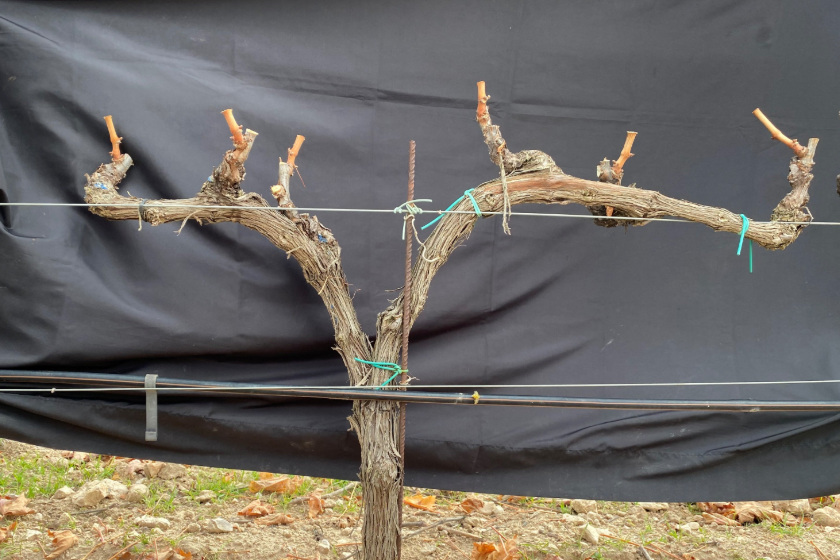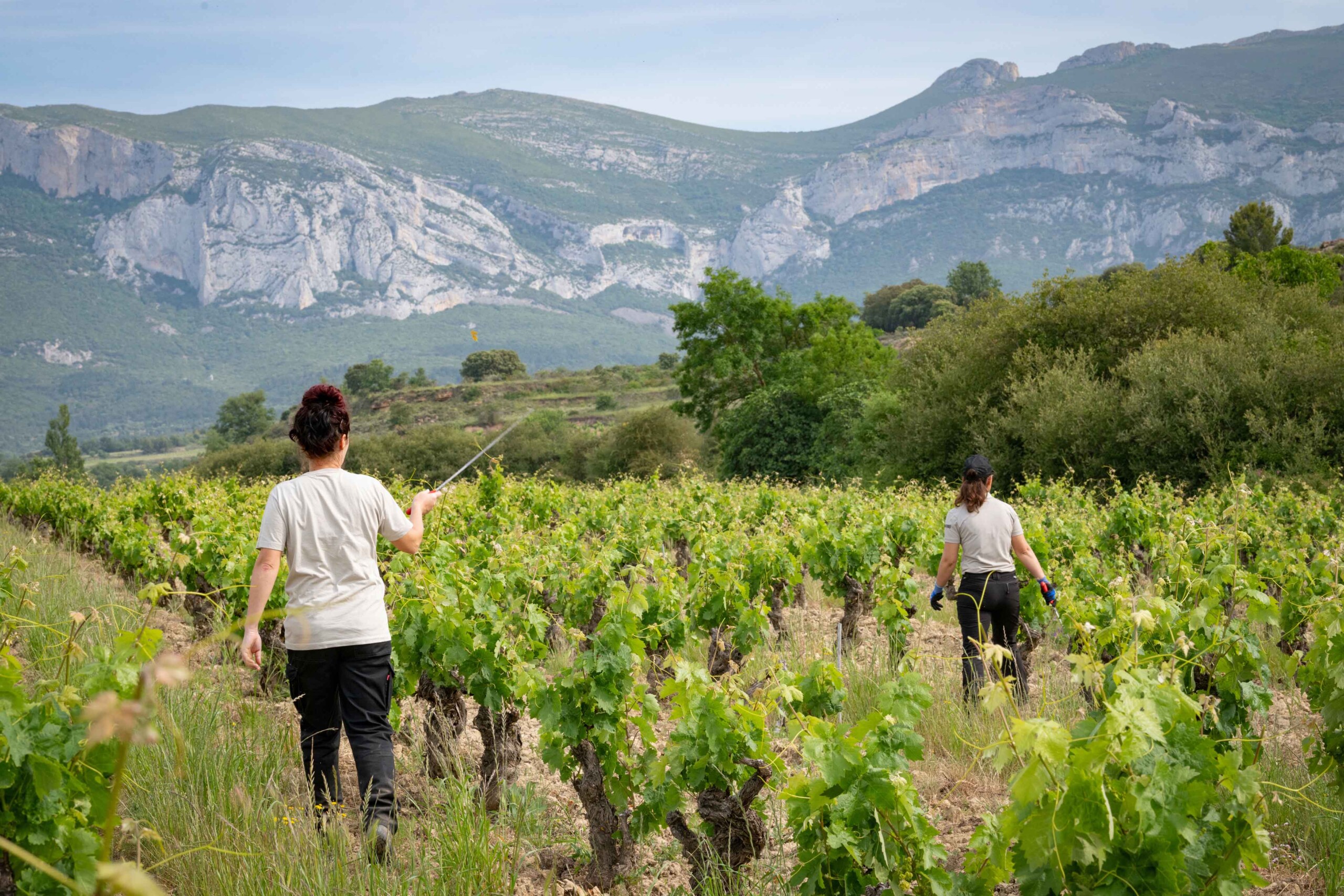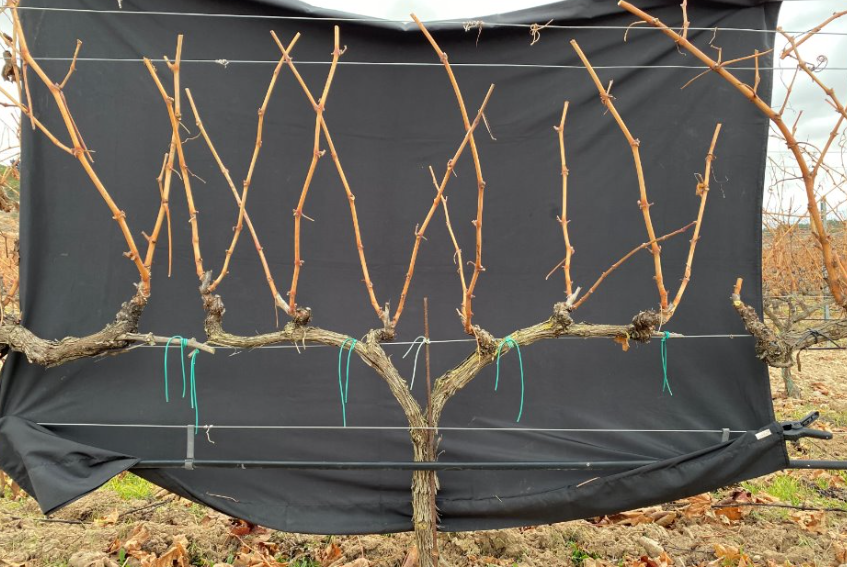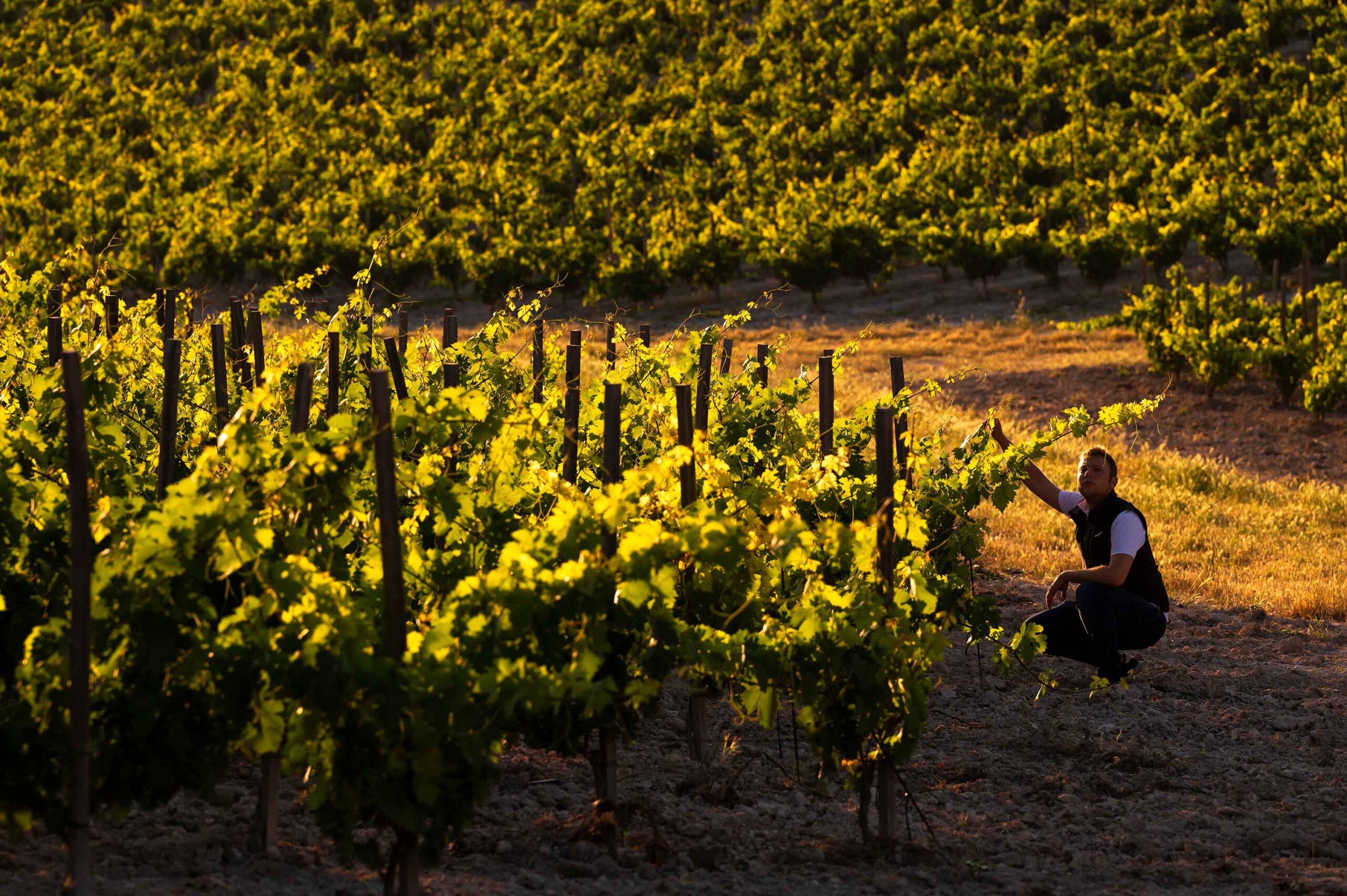Alma Carraovejas has made innovation and sustainability a meaningful way forward. Since our inception, we have been committed to these values as a driver of development, allowing us to transform ourselves consciously, purposefully, and consistently.
One of the pillars of this evolution is research in the vineyard applied to viticulture tasks. Through the CANOPODA project, Alma Carraovejas has developed advanced and sustainable techniques for canopy pruning in vineyards. The aim is none other than to improve the quality of the grapes through the implementation of respectful pruning techniques that help protect the bunches from excessive sun during the summer months, with adequate ventilation and vegetative balance; to achieve greater ecological balance with pruning techniques that minimize the use of phytosanitary products; and to optimize production, enabling the vineyard to cope with changing climate conditions.
In this way, the project has mainly addressed four phases: water stress management, canopy management and pruning techniques, fungal disease control, and vineyard nutritional management.



Each of the wine-growing projects that form part of Alma Carraovejas has carried out a series of activities based on its main needs.
At Pago de Carraovejas, for example, dry and green pruning practices have been implemented for the different training systems (Royat cordon, Echelais bush, vertical axis, etc.). Restructuring, shoot selection, topping, and tying of vine shoots have also been carried out to protect the clusters from the sun’s rays.
At Milsetentayseis, special emphasis has been placed on shoot topping to avoid open canopy, protect bunches, and encourage the development of new shoots. In addition, an evaluation of different planting options such as rootstocks, layering, or grafted plants has been carried out to provide a solution to deficiencies and improve the productive area.
At Viña Meín – Emilio Rojo, the conversion to cordon pruning has begun in several vineyards to increase homogeneity and reduce the risk of disease, and green pruning has been increased to control production, defoliation, and air circulation, among other things.
At Marañones, dry and green pruning methods adapted to the Albillo Real and Garnacha varieties have been applied. Greater emphasis has also been placed on protecting the bunches by trimming the shoots, and dry pruning has been restructured and new outlets created, with wood cleaning during green pruning.
In our Ossian project, monitoring of dry and green pruning has been implemented in historic vineyards. Likewise, the “dragonfly” pruning method has been developed and applied to young vines to help the formation of four arms and guide the shoots or canopy management in summer to maintain verticality, grandchild development, and greater protection from the sun.
Finally, in Aiurri, our project in Rioja Alavesa, this project has also been carried out, facilitating canopy management to improve vigor, and vineyard mapping has been implemented to identify plants in production and deficiencies. In addition, an advanced digital platform has been used to predict the concentration of powdery mildew, downy mildew, and botrytis spores, which issue alerts for the application of phytosanitary products.
The implementation of the CANOPODA project has demonstrated a firm commitment to a sustainable and innovative model through the optimization of pruning techniques, water and soil stress management, and the use of advanced technology.
In short, CANPODA has established a solid foundation for viticulture in the vineyard, allowing us to improve the quality of our raw materials while reinforcing our responsible and innovative vision.




